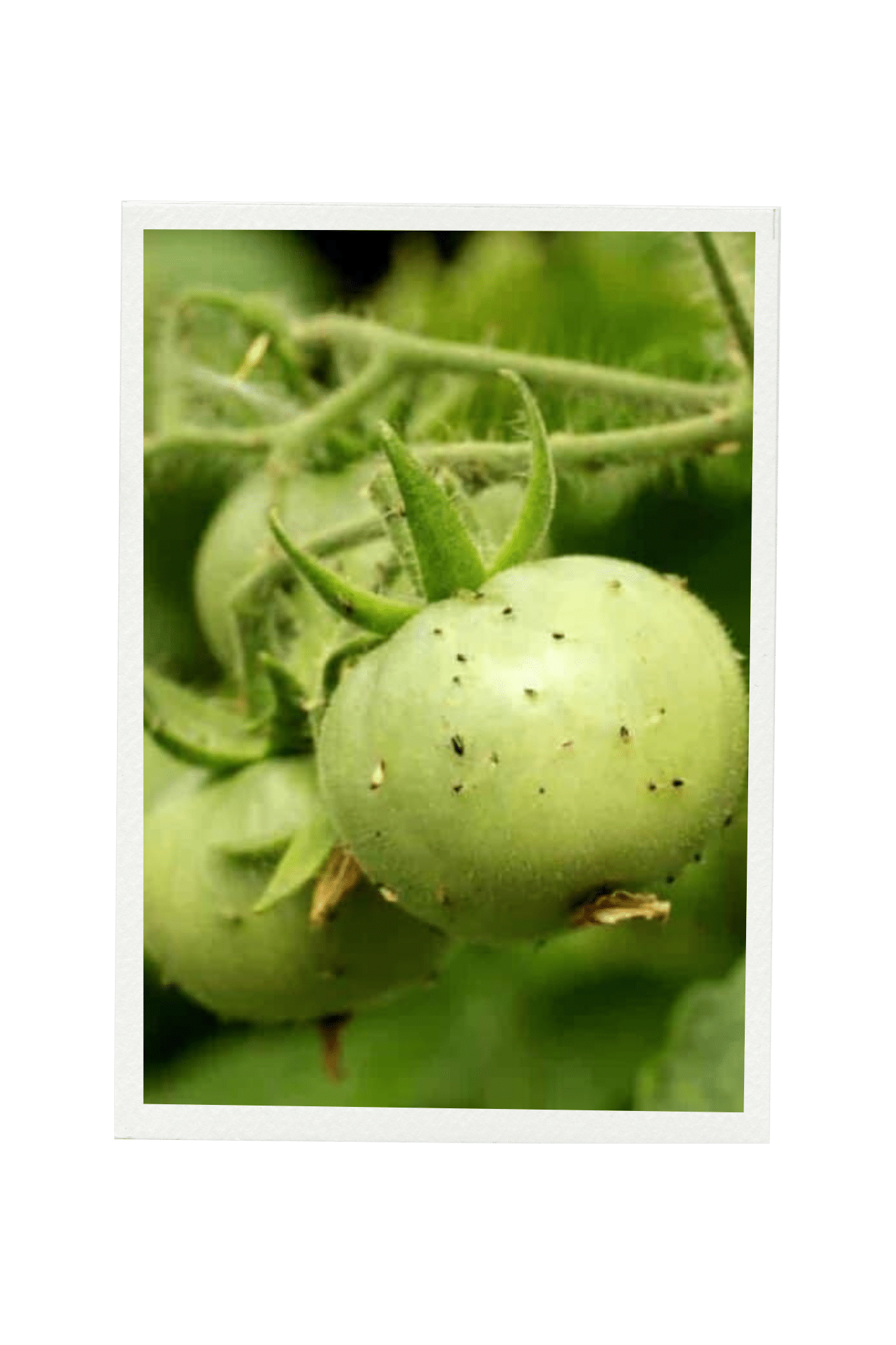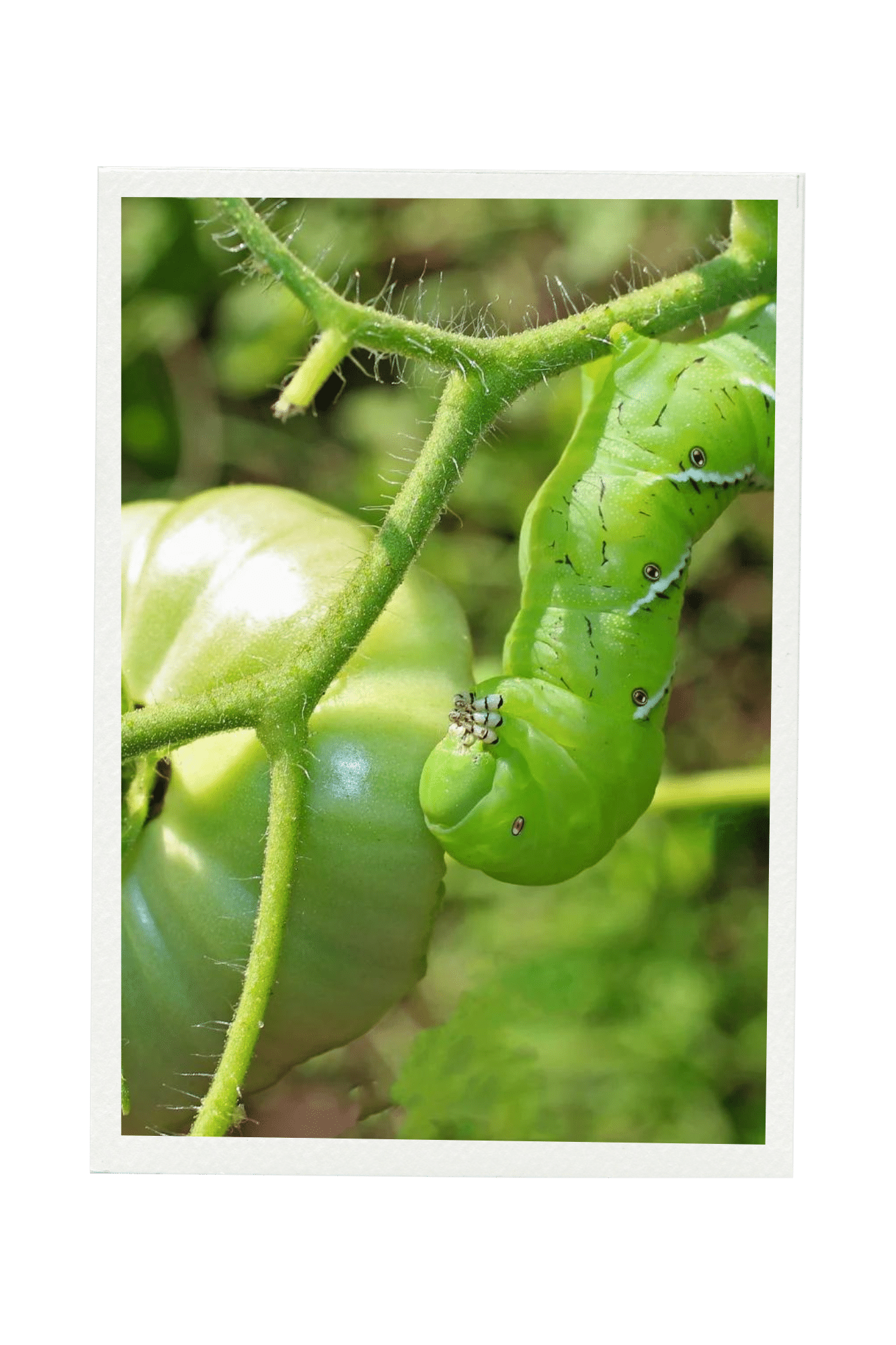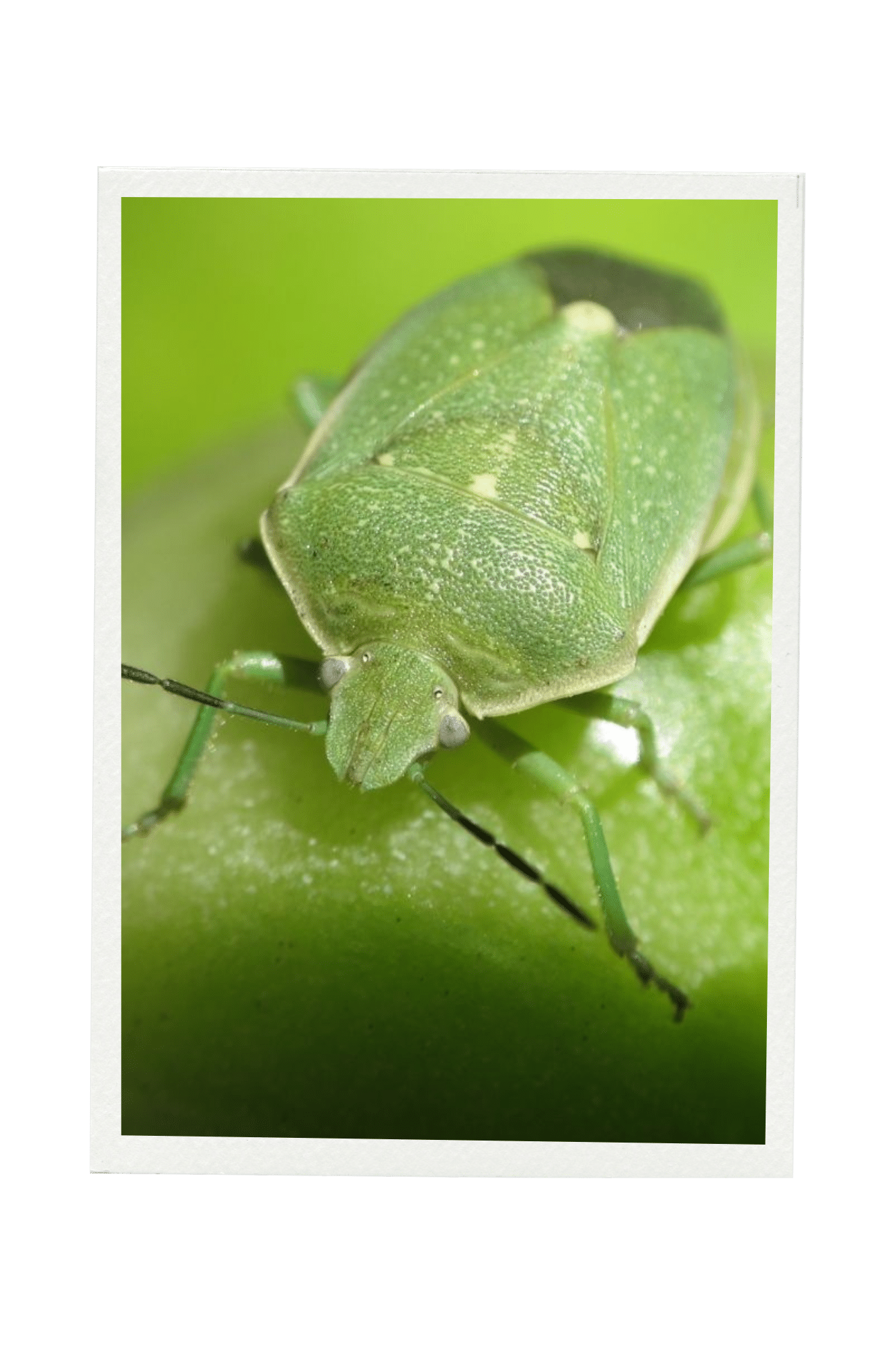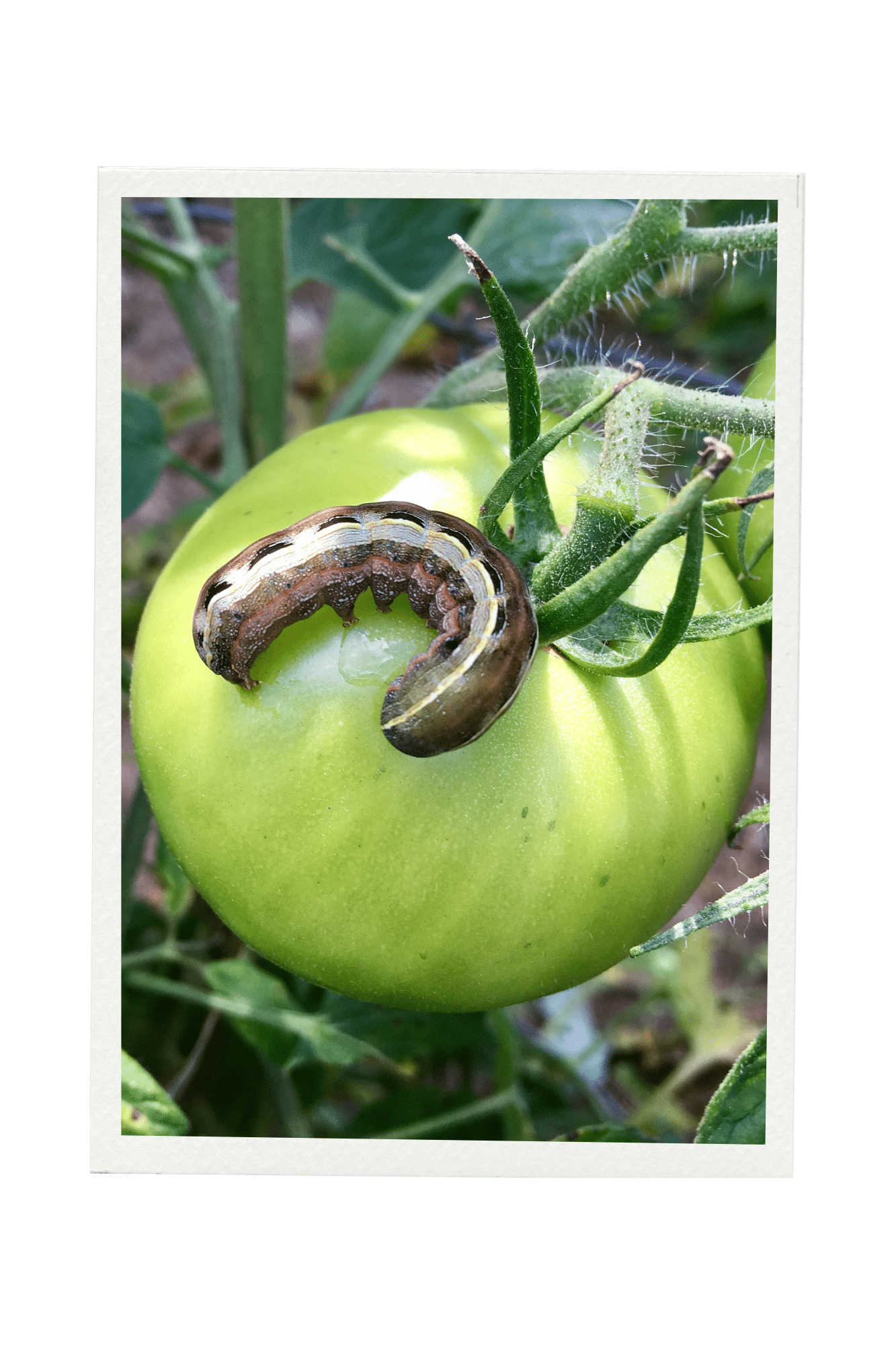
Management of Aphids
in Organic Tomato
Production in Alabama
Aphids are tiny insects that infest a wide range of cultivated host plants and weeds. There are several species of aphids that infest vegetable crops including tomato, eggplant, pepper, peas, beans, corn, and sweet potato. In Alabama, the green peach aphid (Myzus persicae) is the most common aphid found on tomatoes early in the growing season. Adult females give birth to living offspring. Their young ones are slightly smaller but similar to adults in color and shape. Females begin to reproduce quickly within a few days from the onset of summer temperatures. The exponential growth in aphid populations observed throughout the growing season is due to a number of factors. These include female aphids can reproduce without having to mate with males; aphids have very short intervals between generations and have multiple generations per year; aphids have a very wide host range that enables them to survive the absence of specific host plants better than most other insect pests.
Management of the Tomato Hornworm in Organic Tomato Production in Alabama
The tomato hornworm, Manduca quinquemaculata (Haworth), is the most common insect pest of plants in the Solanaceae family, which are also referred to as nightshade plants. Tomatoes appear to be the most preferred host but the insect also infests other nightshade plants such as peppers, eggplants, and potatoes. The tomato hornworm is native to North America and is commonly seen in most tomato growing regions. Even though the tomato hornworm is reported to be uncommon in the southeastern region of the United States, reports of the hornworm incidence and damage are common on tomato farms in Alabama during the first two weeks in June.


Management of Stink Bugs in Organic Tomato Production in Alabama
Stink bugs are large triangular bugs in the Pentatomidae family of insects. They usually appear in green or brown colors. Their common name is derived from disagreeable odors produced by their scent glands to deter predators. They give an awful odor when crushed. The insects possess piercing-sucking mouthpart and use it to suck sap from plants. Several species of stink bugs have been reported on a large number of crops and they cause significant damage as they feed on these crops. However, they cause most damage to tomato, pepper, bean, okra and fruit crops. In the past 3 years in the southeast United States, stink bugs have shifted from occasional minor pests to frequent major pests. The most common species in Alabama are the green stink bug (Acrosternum hilare) and brown stinkbug (Euschistus servus). Stink bugs build up their populations on alternate hosts like broadleaf weeds, legumes and soybeans until cultivated hosts become available. They overwinter as adults in the northern parts of the US but are active all year round in the warmer southern regions of the US.
Management of Tomato Fruitworm in Organic Tomato in Alabama
The tomato fruitworm, Helicoverpa zea (Boddie), is a serious insect pest of several vegetable plants in the southeastern United States. Tomato fruitworm feeds on more than 100 plants including tomato, corn and cotton. It is called by many other names, such as corn earworm or cotton bollworm. Tomato fruitworm attacks many other crops like tobacco, soybean, pepper, bean, okra and eggplant. In Alabama, tomato fruitworm damage in organic tomato is usually observed during early June and continues throughout the cropping season until fruits are harvested.

